1. Automated Sky Surveys and Object Detection
AI algorithms can process data from telescopic sky surveys much faster than humanly possible, automatically detecting and cataloging celestial objects, including stars, galaxies, and transient events like supernovae, enhancing our understanding of the universe's structure and evolution.
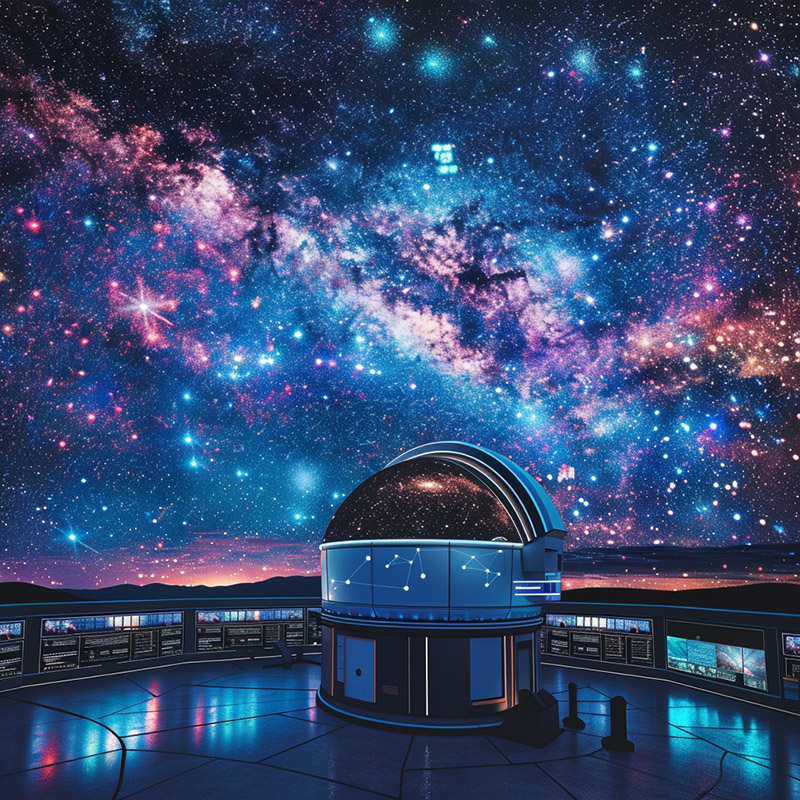
The integration of AI in automated sky surveys and object detection streamlines the process of cataloging celestial bodies and phenomena across the universe. By rapidly processing the vast amounts of data generated by telescopic observations, AI can identify, classify, and track objects in real time, significantly reducing the time and effort required by astronomers. This capability not only accelerates the pace of discovery but also ensures that transient events, such as supernovae or comets, are detected promptly, allowing for immediate study. The productivity boost from AI enables astronomers to focus on analyzing these findings and exploring the underlying astrophysical processes, expanding our understanding of the cosmos.
2. Exoplanet Discovery and Analysis
AI can analyze data from space telescopes to identify exoplanets by detecting minute fluctuations in starlight caused by orbiting planets. It can also classify these planets based on their potential habitability, accelerating the search for Earth-like worlds.
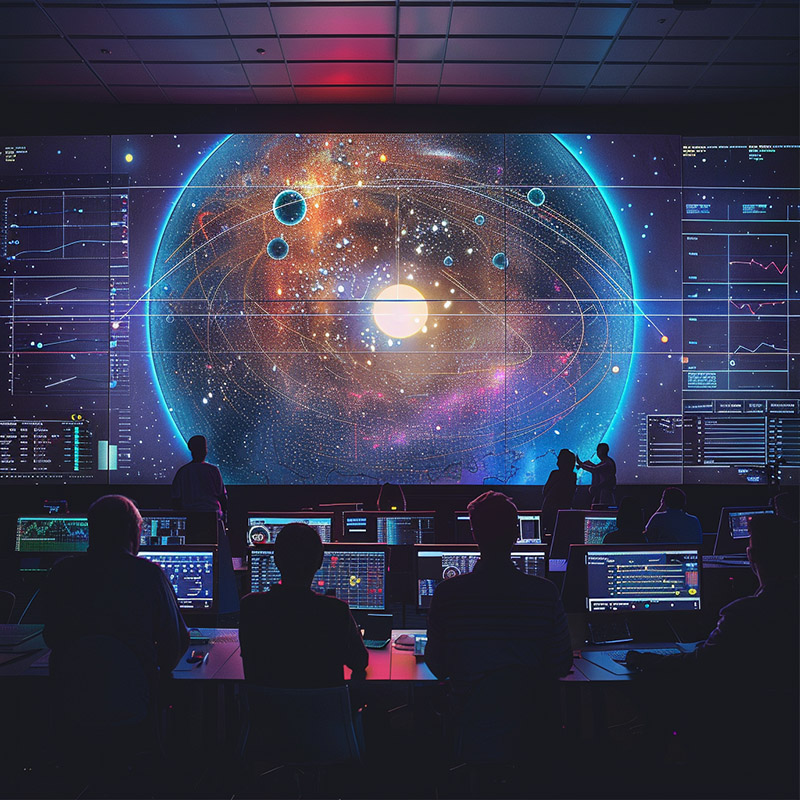
AI dramatically enhances the productivity of exoplanet discovery and analysis by sifting through the light curves of thousands of stars, identifying the minute dimming caused by planets passing in front of them. This process, which would be prohibitively time-consuming for human researchers, is executed swiftly and accurately by AI, leading to the discovery of new worlds at an unprecedented rate. Furthermore, AI can analyze the characteristics of these planets, such as size, orbit, and possible atmospheric composition, prioritizing candidates for further study and focusing efforts on worlds that could harbor life, thereby streamlining the search for extraterrestrial life.
3. Cosmic Distance Measurement
AI techniques can improve the accuracy of cosmic distance measurements by analyzing the light from distant celestial objects and comparing it to known standards. This helps in refining our understanding of the universe's expansion rate and overall scale.
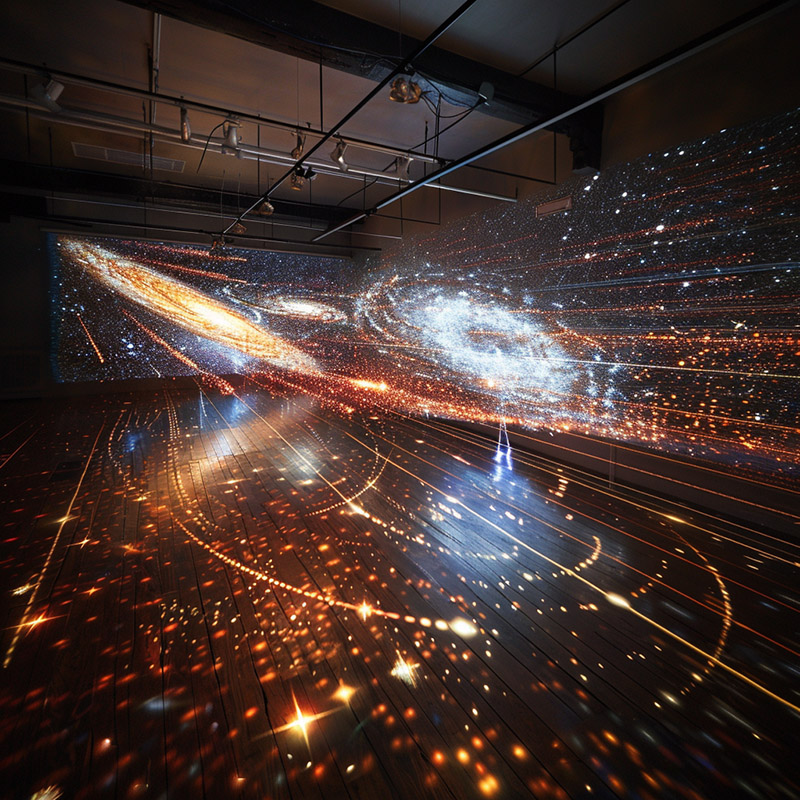
In cosmic distance measurement, AI enhances productivity by automating the complex calculations needed to determine the distances of celestial objects. Using data from various sources, AI algorithms apply standard candles and redshift measurements more efficiently than traditional methods, providing accurate distance estimations faster. This precision is crucial for understanding the scale of the universe, its expansion rate, and the distribution of matter. By refining these fundamental measurements, AI enables astronomers to construct more accurate models of the universe, facilitating further research and discovery.
4. Galaxy Morphology Classification
By processing images from deep-space observations, AI can classify galaxies based on their shape and structure, aiding in the study of galaxy formation and evolution. This automation allows for the rapid analysis of vast numbers of galaxies.
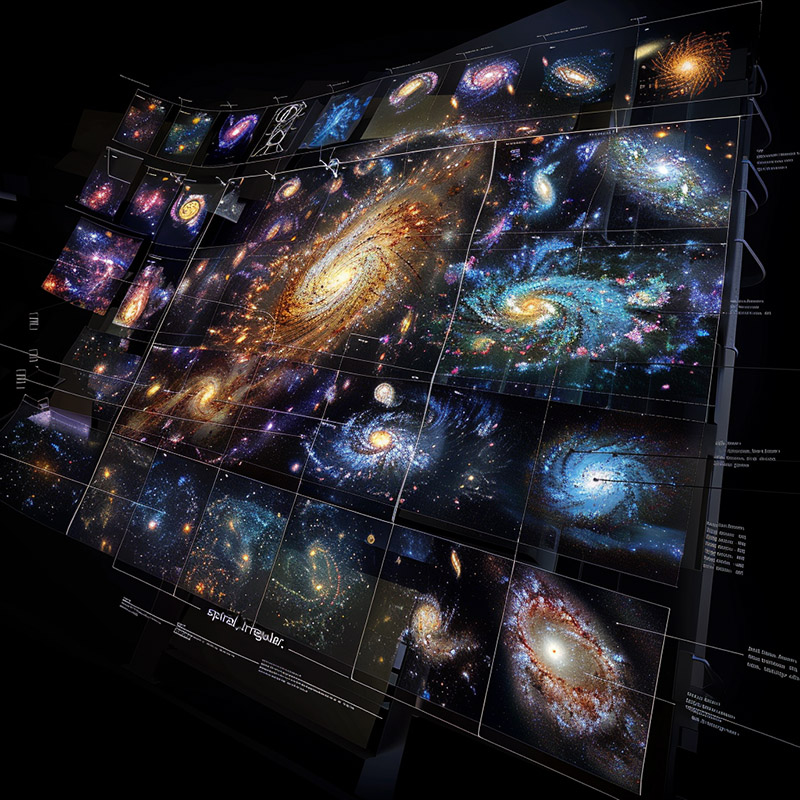
AI's ability to classify galaxies based on their morphology automates a task that traditionally required significant human effort. By analyzing images from deep-space telescopes, AI can quickly categorize galaxies into spirals, ellipticals, irregulars, and more, based on their shapes and structures. This automation supports large-scale studies of galaxy formation and evolution, allowing astronomers to process vast datasets and identify patterns or anomalies that could lead to new insights into the dynamics of the cosmos. The productivity gains from AI free up researchers to delve deeper into the physics driving these galactic features.
5. Dark Matter and Dark Energy Research
AI models can simulate cosmic structures and analyze observational data to infer the distribution of dark matter and the effects of dark energy on the universe's expansion, contributing critical insights into these mysterious components.
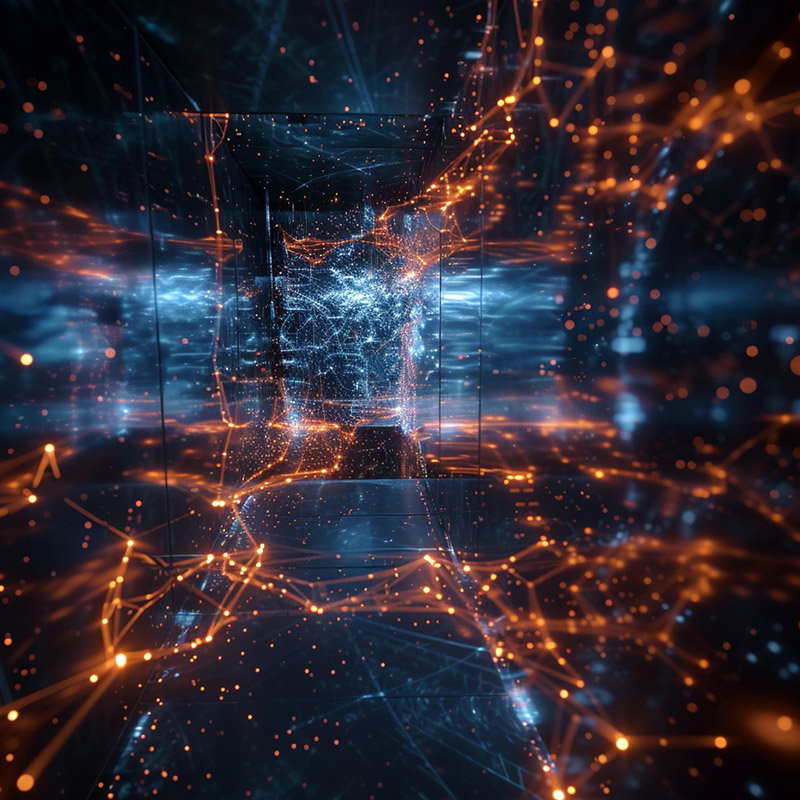
In the realm of dark matter and dark energy research, AI plays a pivotal role in modeling and analyzing the effects of these elusive components on the universe. By processing observational data, AI helps simulate the cosmic web and the distribution of dark matter, as well as measure the impact of dark energy on cosmic expansion. These complex analyses, which would be daunting and time-consuming for humans to undertake manually, are efficiently handled by AI, accelerating the pace of discovery and allowing scientists to focus on interpreting results and developing theories to explain these phenomena.
6. Astrophysical Phenomena Prediction
AI can predict astrophysical events, such as solar flares or supernovae, by analyzing patterns in observational data. This predictive capability is invaluable for planning observations and protecting space-based and terrestrial infrastructure from solar storms.
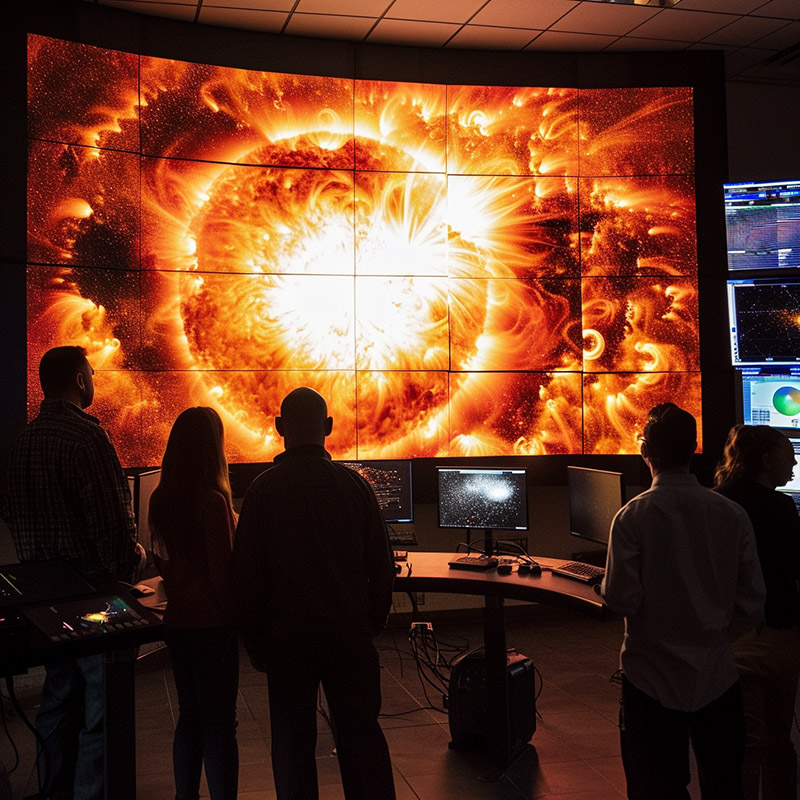
AI enhances the prediction of astrophysical phenomena, such as solar flares or supernovae, by analyzing patterns in vast datasets that precede these events. This predictive capability is invaluable for planning telescope observations, safeguarding satellites and power infrastructure on Earth, and conducting timely research. By forecasting these events with greater accuracy, AI ensures that astronomers can maximize observational opportunities and that society can take preventive measures against space weather effects, significantly improving productivity in both scientific research and practical applications.
7. Signal Processing for Radio Astronomy
AI excels in filtering out noise from cosmic signals in radio astronomy data, enhancing the detection of faint signals from the early universe or distant cosmic phenomena, and opening new windows into the cosmos.
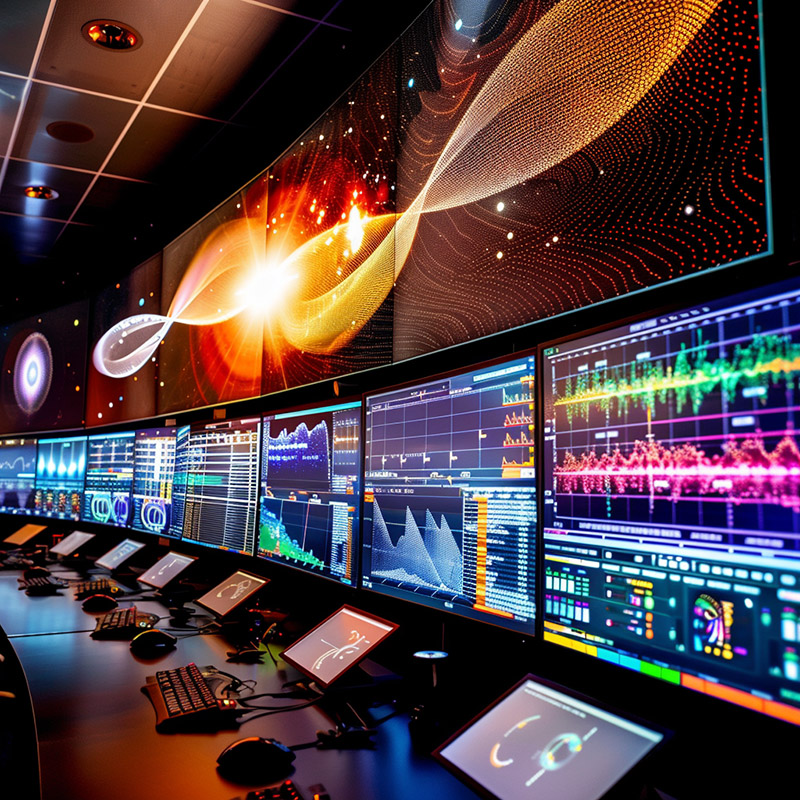
AI's contribution to signal processing in radio astronomy lies in its ability to distinguish between cosmic signals and noise, a task that is crucial for detecting faint emissions from the universe's early days or distant astronomical phenomena. This filtering process, enhanced by AI, allows for the extraction of meaningful data from the background noise, uncovering signals that might otherwise be missed. The increased efficiency and accuracy in signal processing enable radio astronomers to make more discoveries from existing data, pushing the boundaries of our cosmic knowledge.
8. Automated Data Calibration and Cleaning
AI algorithms can automatically calibrate astronomical data and remove artifacts caused by instrumentation or atmospheric interference, ensuring high-quality data for researchers and maximizing the scientific return from observatory time.
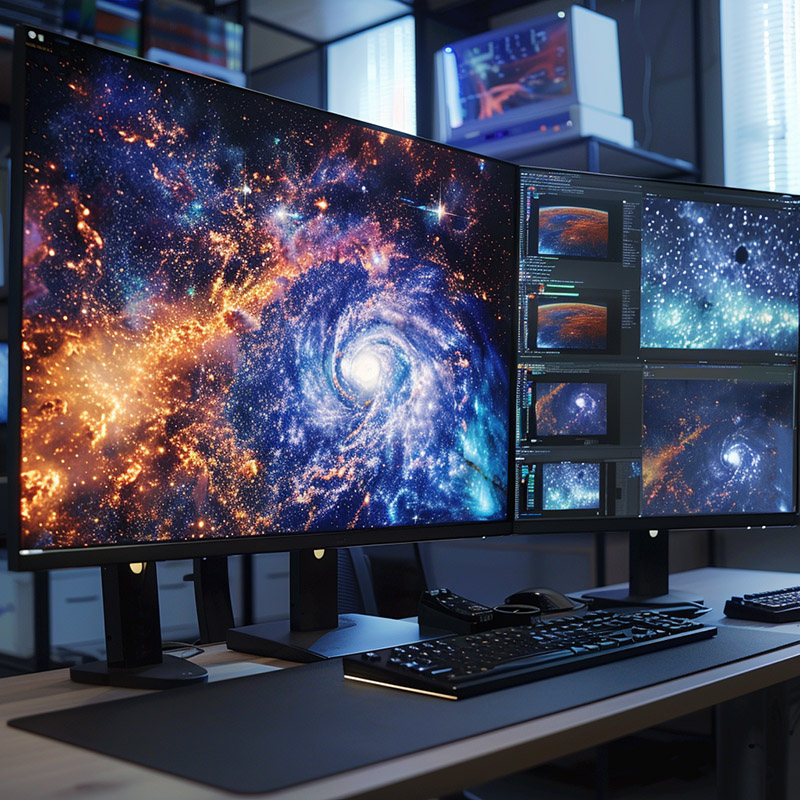
The use of AI for automated data calibration and cleaning ensures that astronomical data is of the highest quality before it reaches researchers. By automatically adjusting for instrumental and atmospheric distortions, AI saves astronomers countless hours of manual data preprocessing. This clean, calibrated data is crucial for accurate analysis and interpretation, allowing scientists to trust their findings and base further research on solid, artifact-free observations, thereby enhancing the productivity and reliability of astronomical research.
9. Gravitational Wave Detection
AI techniques can quickly sift through data from gravitational wave detectors, identifying signals from events like black hole mergers amid noise. This rapid detection allows astronomers to coordinate follow-up observations with other instruments.
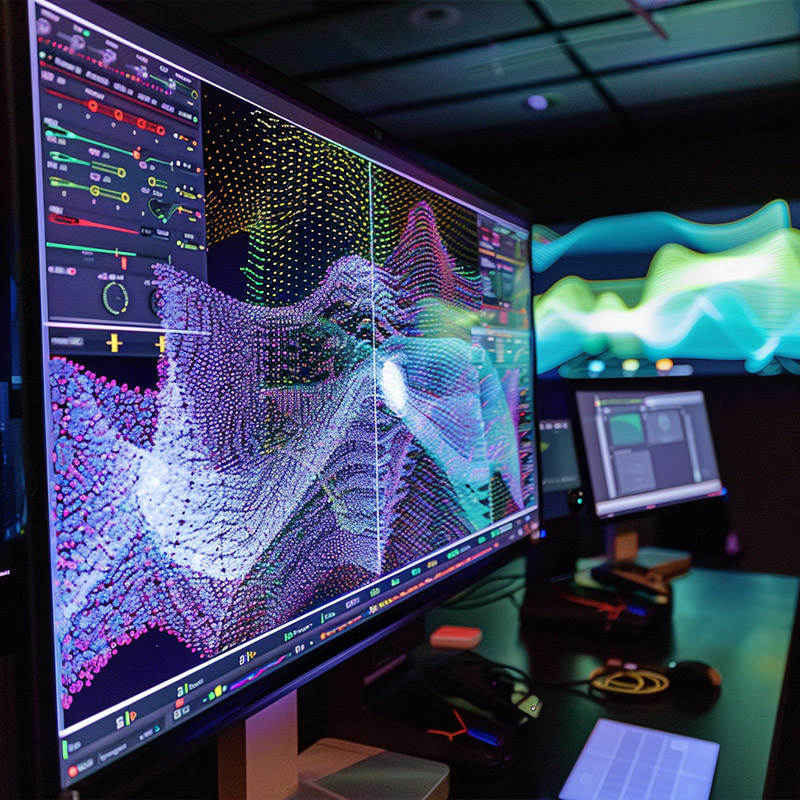
AI's role in gravitational wave detection is transformative, enabling the rapid identification of these space-time ripples amidst data noise. This quick detection allows astronomers to alert observatories around the world to focus on the event's location in the sky, facilitating multi-messenger observations that provide a fuller picture of cosmic events like neutron star collisions. AI's efficiency in sifting through data ensures that no potential detection is missed, maximizing the scientific yield from gravitational wave observatories and deepening our understanding of the universe's most violent phenomena.
10. Space Weather Forecasting
By analyzing solar activity, AI can forecast space weather events, such as coronal mass ejections, with greater accuracy. This is crucial for protecting satellites, astronauts, and power grids on Earth, as well as for planning sensitive astronomical observations.
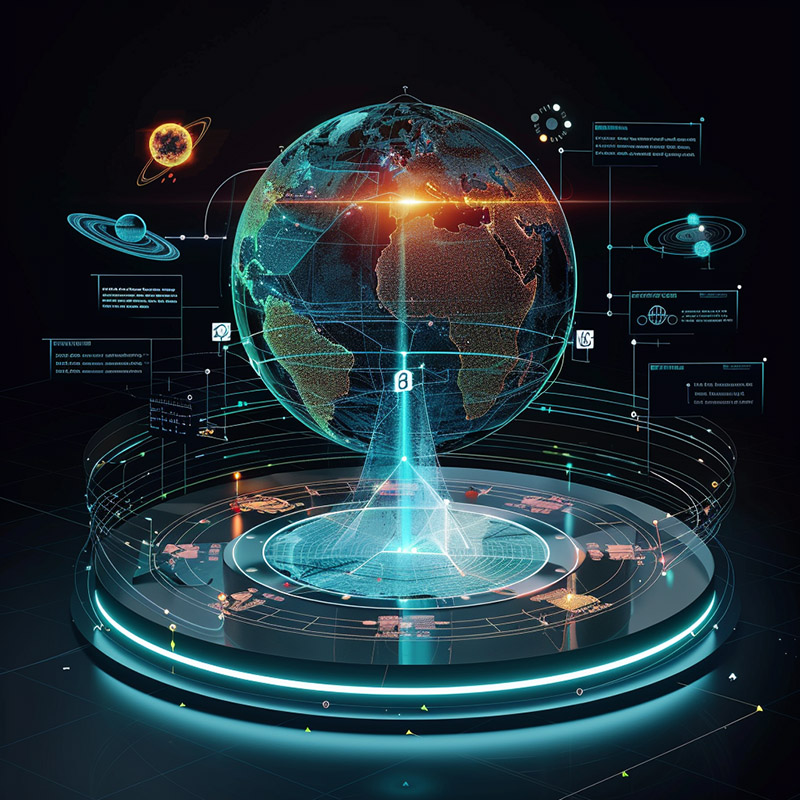
In space weather forecasting, AI's ability to analyze solar activity data and predict events like coronal mass ejections improves our preparedness for space weather impacts. By providing accurate forecasts, AI enables satellite operators to take protective measures, power grid managers to mitigate risks of outages, and astronomers to plan observations without interference. This predictive power ensures the continued functionality of critical infrastructure and scientific instruments, safeguarding both technological assets and the productivity of astronomical research.